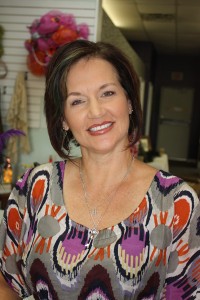
My aunt, the youngest of five children, baby sister to my mother and one of the coolest people I know died of breast cancer when she was in her fifties. The best way to describe her was an adventurer. For many years, she worked for an airline and traveled every opportunity to she had. She would go to countries that were in the midst of war or some sort of upheaval, not because she enjoyed the atmosphere of war, but because she had planned her vacation for that time and she felt she shouldn’t have to miss the opportunity to see the country even if it wasn’t the best time. She had many jobs during her short life—she was a waitress, a bartender, worked at a zoo, and finally landed at the airline where she loaded and unloaded baggage on the planes. When her illness limited her in her job duties, the airlines gave her a desk job. She despised sitting still all day and decided that was not how she wanted to live out the rest of her life, so she resigned to enjoy whatever time she had. She had a double mastectomy and later had surgery to rebuild her breasts. She called me the day she met with the surgeon and told me she had picked out a “perfect size C, brand new perky tatas.” Even though this was not something of her choosing, she seemed excited about this new adventure, too. In the end, she lost the battle. At the time she was going through her treatment, there was a 90% survival rate for breast cancer. This figure was a dramatic increase from just a few years before she was diagnosed when the survival rate was 80%. And before that, if a woman heard the words “you have breast cancer”, it was a death sentence.
Breast cancer research has come a long way, and today’s survival rate is 98% if it is caught early. However, if it is not detected early, the survival rate is only 23%. What is the key? Self exams and regular screenings are two things that you can do to protect yourself. Self exams cost nothing, and there are grants and programs to help with screenings and mammograms. The other key element is to support ongoing research so that the survival rate becomes 100%, and our children will have to read about breast cancer in history books. Research isn’t free, it costs money. You can help with that, too. Donations and funds raised from community events such as Susan G. Komen Race for the Cure and the American Cancer Society’s Relay for Life help raise money to pay for programs, raise awareness and fund research. To learn more, visit www.cancer.org and/or www.komen.org . Even if you don’t know of someone whose life has been touched by cancer, make a difference for your children and your grandchildren We are not promised tomorrow, so make the most of today! Get involved…don’t wait for someone else to step up. You be the adventurer!









